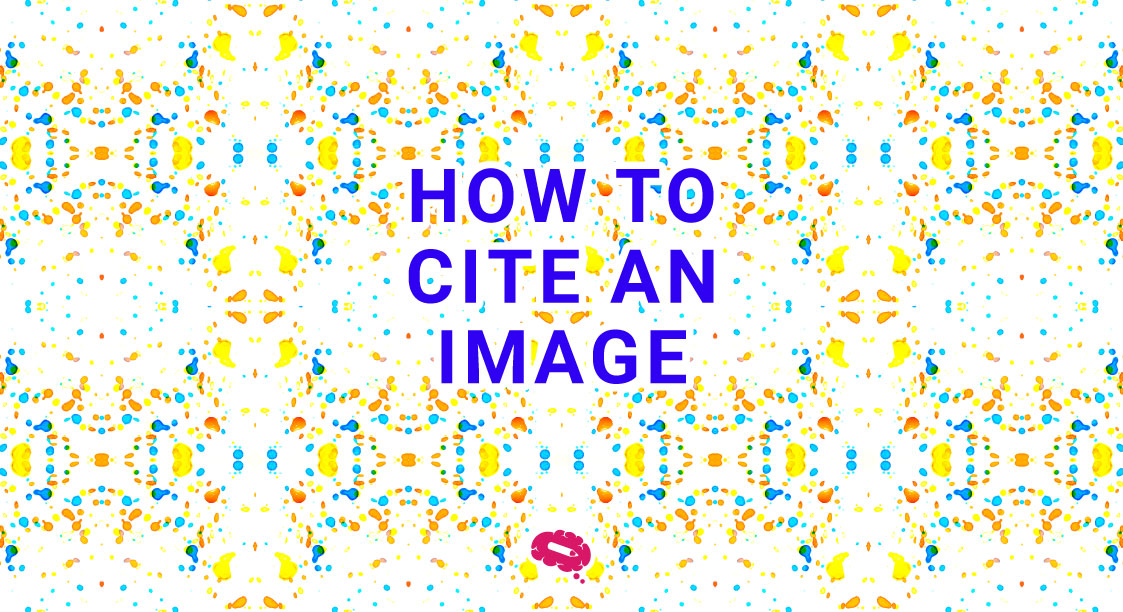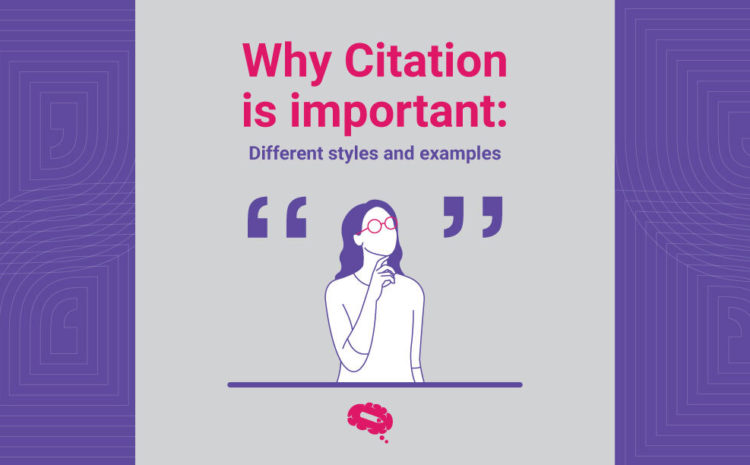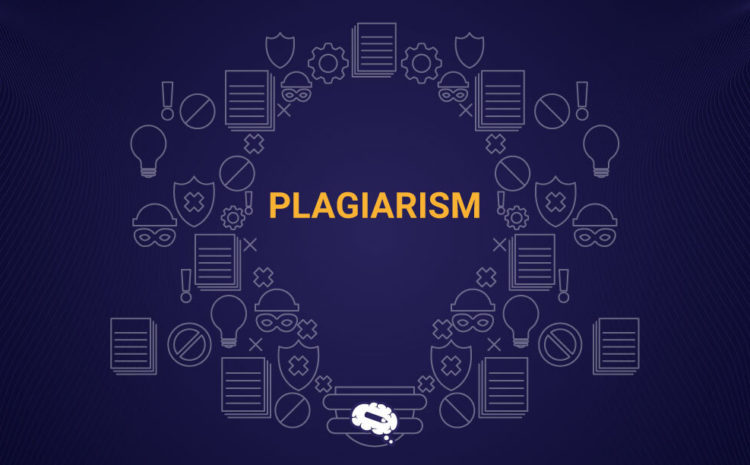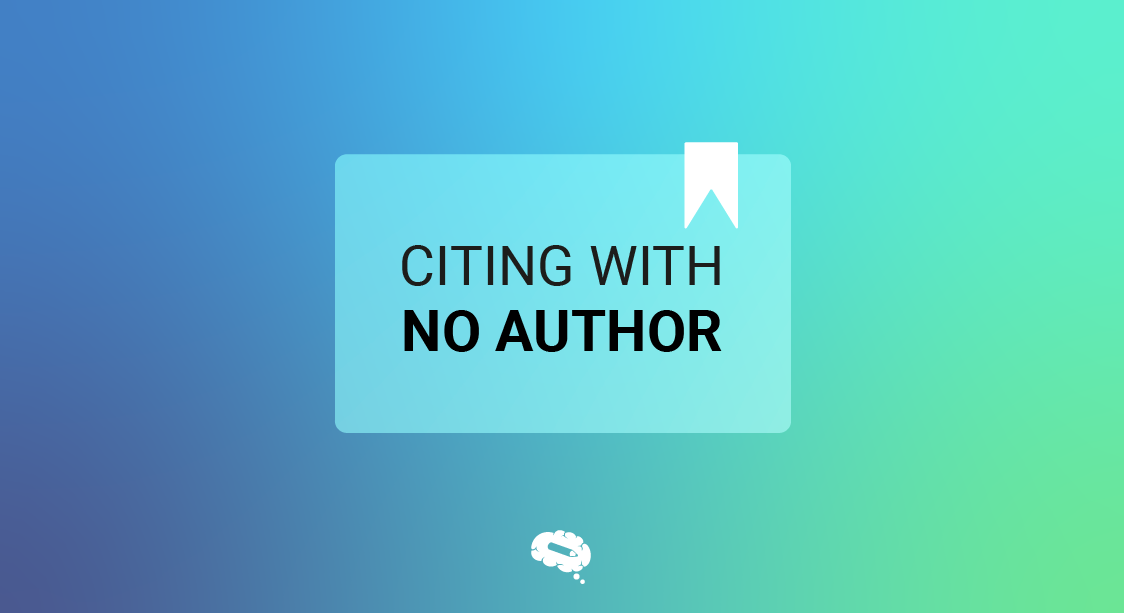Å vite hvordan man siterer et bilde på riktig måte er avgjørende for alle som produserer skriftlige arbeider, fra studenter til profesjonelle. Det er viktig å sitere digitale bilder du finner på nettet, slik at du gir korrekt kreditering og unngår plagiat. Ved å sitere bilder på riktig måte gir du ikke bare kreditt til den opprinnelige opphavspersonen, men du unngår også plagiering og sikrer integriteten til arbeidet ditt. I tillegg er det viktig å sitere bilder du finner på Google Bilder på riktig måte ved å referere til originalkilden i stedet for til selve Google Bilder. Enten du bruker bilder i en forskningsoppgave, en presentasjon eller et blogginnlegg, er det avgjørende å forstå det riktige sitatformatet. I denne veiledningen går vi gjennom trinnene for hvordan du siterer et bilde, med tydelige eksempler og praktiske råd. Gjør deg klar til å mestre kunsten å sitere bilder på en trygg og enkel måte.
Forståelse av bildesitater
Viktigheten av å sitere bilder
Sitering av bilder er viktig av flere grunner. Det er viktig å anerkjenne bildeskaperens rolle i siteringsprosessen, i stedet for å sitere søkemotoren der bildet er funnet. For det første anerkjenner det den opprinnelige opphavspersonens innsats og åndsverk, og sikrer at vedkommende får behørig kreditt. For det andre bidrar korrekt sitering til at du unngår plagiat, noe som kan få alvorlige akademiske og profesjonelle konsekvenser. I tillegg øker du troverdigheten til arbeidet ditt ved å oppgi korrekte kildehenvisninger, slik at andre kan verifisere kildene til bildene dine. Denne åpenheten er spesielt viktig i akademiske og forskningsmiljøer, der integriteten til referansene dine kan ha stor innvirkning på hvordan arbeidet ditt blir mottatt. Å forstå hvordan du siterer et bilde korrekt, beriker også din egen kunnskap om og forståelse av kildemateriale, og fremmer en respektfull og etisk bruk av ressurser. Alt i alt er korrekt bildesitering en grunnleggende praksis for å opprettholde akademisk redelighet og faglig integritet.
Vanlige sitatstiler
Når du skal lære hvordan du siterer et bilde, er det viktig å forstå de ulike sitatstilene som vanligvis brukes. De tre mest utbredte stilene er APA (American Psychological Association), MLA (Modern Language Association) og Chicago. Hver av dem har sine egne regler og formater.
APA-stilen brukes ofte i samfunnsvitenskapene og inkluderer forfatterens navn, dato, bildets tittel og kilde. MLA-stilen, som ofte brukes i humaniora, krever forfatternavn, bildets tittel, tittelen på beholderen (f.eks. en bok eller et nettsted) og andre relevante opplysninger som utgiver og dato. Bildets tittel skal stå i anførselstegn i MLA Works Cited-oppføringer for et bilde som er funnet på nettet. Chicago-stilen er allsidig, brukes i ulike fagområder og kan inkludere fotnoter eller sluttnoter sammen med en bibliografioppføring.
Når du kjenner til disse stilene, kan du sitere bilder på en nøyaktig måte, avhengig av konteksten for arbeidet ditt. Ved å sette deg inn i de spesifikke kravene som gjelder for hver enkelt stil, sikrer du at du siterer korrekt og profesjonelt.
Velge riktig stil
Hvilken referansestil som er best egnet, avhenger av konteksten og kravene til arbeidet ditt. Når det gjelder akademisk skriving, er valget ofte diktert av fagdisiplinen. Humanistiske fag følger vanligvis MLA-stilen, mens APA-stilen foretrekkes i samfunnsvitenskapene. Chicago-stilen er mye brukt i historie og enkelte naturvitenskapelige fag.
Se institusjonens retningslinjer, eller spør læreren din om råd for å finne ut hvilken stil som kreves. For profesjonelle dokumenter eller forretningsdokumenter bør du følge stilveiledningen som er standard i din bransje eller organisasjon. Hvis du skriver for en publikasjon, må du følge de spesifikke kravene til sitering.
Konsistens er nøkkelen. Når du har valgt en stil, bør du bruke den på samme måte i hele dokumentet. Dette sikrer ikke bare klarhet, men opprettholder også det profesjonelle utseendet på arbeidet ditt. Hvis du vet hvordan du siterer et bilde korrekt i den valgte stilen, vil det gi innholdet ditt troverdighet og pålitelighet.
Sitering av bilder i akademiske arbeider
Sitat i MLA-stil
Når du bruker MLA-sitasjonsstil Når du skal sitere et bilde, må du oppgi spesifikke detaljer for å sikre korrekt attribusjon. Begynn med opphavspersonens navn, etterfulgt av bildets tittel i kursiv. Hvis bildet ikke har noen tittel, kan du i stedet gi en kort beskrivelse. Når du siterer et bilde på nettet, er det viktig å inkludere tittel eller beskrivelse, dato, URL-adresse og kunstnernavn. Deretter oppgir du tittelen på beholderen, for eksempel boken, nettstedet eller museet der bildet er funnet. Deretter oppgir du utgiver, publiseringsdato og stedsdetaljer, for eksempel sidetall eller URL-adresse.
For eksempel Smith, John. Solnedgang over åsene. Kunst i naturen, redigert av Jane Doe, Nature Publishing, 2020, s. 45.
Hvis bildet er fra et nettsted, kan henvisningen se slik ut: Doe, Jane. Gamle ruiner. Historiske bilder, www.historicphotos.com/ancient-ruins. Besøkt 12. oktober 2023.
Ved å bruke MLA-formatet på riktig måte kan du presentere et polert og troverdig akademisk arbeid.
APA-sitasjonsstil
Den APA-sitasjonsstil er vanlig i samfunnsvitenskapene og krever spesifikke elementer for å sitere et bilde korrekt. Det er viktig å inkludere navnet på opphavspersonen til bildet i sitatet. Begynn med opphavspersonens etternavn, etterfulgt av initialene. Deretter oppgir du publiseringsåret i parentes. Bildets tittel bør stå i kursiv, eventuelt etterfulgt av en beskrivelse i hakeparentes. Til slutt oppgir du kilden, for eksempel navnet på nettstedet eller boken, sammen med URL-adressen eller sidetallet.
For eksempel Smith, J. (2020). Solnedgang over åsene [Fotografi]. Nature Publishing. https://www.naturepublishing.com/sunset-over-hills
Hvis bildet er en del av et større verk, for eksempel en bok eller en artikkel, kan kildehenvisningen se slik ut: Doe, J. (2023). Gamle ruiner [Foto]. I Historiske bilder (p. 45). Nature Publishing.
Ved å følge APA-formatet sikrer du at siteringene dine er tydelige og profesjonelle, noe som styrker troverdigheten til det akademiske arbeidet ditt.
Chicago sitatstil
Den Chicago sitatstil er fleksibel, og har plass til både fotnoter og sluttnoter, i tillegg til en bibliografioppføring for sitering av bilder. Begynn med opphavspersonens fulle navn, etterfulgt av bildets tittel i kursiv. Hvis bildet ikke har noen tittel, kan du gi en kort beskrivelse. Oppgi dato for opprettelse, type verk og kilde, for eksempel navnet på boken, nettstedet eller institusjonen.
For en fotnote eller sluttnote kan henvisningen se slik ut:
1. John Smith, Solnedgang over åsene, 2020, fotografi, Nature Publishing, https://www.naturepublishing.com/sunset-over-hills.
I bibliografien vil det se slik ut:
Smith, John. Solnedgang over åsene. 2020. Fotografi. Nature Publishing. https://www.naturepublishing.com/sunset-over-hills.
For bilder i en bok:
Doe, Jane. Gamle ruiner. 2023. Fotografi. I Historiske bilder, 45. Nature Publishing.
Riktig bruk av Chicago-stilen sikrer grundig og nøyaktig dokumentasjon, noe som øker den vitenskapelige kvaliteten på arbeidet ditt.
Sitering av bilder for nettinnhold
Blogginnlegg og artikler
Når du siterer bilder i blogginnlegg og artikler, er det viktig å følge beste praksis for å sikre korrekt kreditering og lovlighet. Begynn med opphavspersonens navn og en hyperlenke til det opprinnelige verket, hvis det er tilgjengelig. Hvis bildet er fra et arkivfoto-nettsted eller en Creative Commons-kilde, inkluderer du nettstedets navn og en lenke til bildet. Oppgi lisenstypen, hvis det er relevant, for å informere leserne om bruksrettigheter.
For eksempel:
Foto av John Smith på Unsplash
Eller..:
Bilde av Jane Doe, Creative Commons
Hvis bildet er ditt eget, skriver du bare at det er ditt verk:
Bilde © [Ditt navn]
Nøyaktig kildehenvisning til bilder i blogginnlegg og artikler respekterer ikke bare opphavspersonens rettigheter, men styrker også troverdigheten til innholdet ditt. Riktig kildehenvisning bidrar til å bygge tillit hos publikum og opprettholder etiske standarder for nettpublisering.
Plattformer for sosiale medier
Det kan være enkelt å sitere bilder på sosiale medier, men det er avgjørende for å opprettholde etiske standarder. Oppgi alltid opphavspersonens navn eller profilnavn sammen med en direkte henvisning hvis det er mulig. Hvis plattformen støtter klikkbare lenker, bør du legge inn en lenke til originalkilden eller opphavspersonens profil. Denne praksisen krediterer ikke bare den opprinnelige opphavspersonen, men oppmuntrer også til engasjement og autentisitet.
For eksempel på Twitter eller Instagram:
Foto av @JohnSmith via Unsplash
På Facebook kan du skrive:
Bilde av Jane Doe fra Creative Commons: [Lenke til bildet]
Hvis du deler ditt eget arbeid, kan du bruke en enkel kildehenvisning som f.eks:
Foto © [Ditt navn]
er tilstrekkelig. Riktig kildehenvisning i sosiale medier bygger tillit hos publikum og viser respekt for immaterielle rettigheter. Det bidrar også til å gjøre opphavspersoner synlige og anerkjente, og skaper et støttende og troverdig nettsamfunn.
Nettsteder og nettsider
Når du siterer bilder på nettsteder og nettsider, er det viktig å gi tydelig og tilgjengelig kreditt til de opprinnelige opphavspersonene. Begynn med opphavspersonens navn, etterfulgt av bildets tittel, hvis den er tilgjengelig. Inkluder en hyperkobling til originalkilden eller opphavspersonens profil. Hvis bildet er lisensiert, bør du oppgi lisenstypen og lenke til den for å sikre åpenhet.
For eksempel:
Foto av John Smith, Solnedgang over åsene, tilgjengelig på Unsplash, under Unsplash-lisens.
For Creative Commons-bilder kan du skrive:
Bilde av Jane Doe via Creative Commons.
Hvis du siterer ditt eget bilde, bruker du det:
Bilde © [Ditt navn]
Denne tilnærmingen respekterer ikke bare opphavspersonens åndsverk, men styrker også troverdigheten til nettstedet ditt. Riktig kildehenvisning sikrer at du overholder loven og er etisk transparent, noe som skaper tillit hos publikum og støtter det kreative miljøet.
Verktøy og ressurser for sitering av bilder
Generatorer for nettbaserte sitater
Siteringsgeneratorer på nett kan være uvurderlige verktøy når du skal lære deg å sitere et bilde på riktig måte. Disse verktøyene forenkler siteringsprosessen ved å automatisk formatere de nødvendige opplysningene i henhold til ulike stiler, for eksempel APA, MLA og Chicago. Du skriver vanligvis inn opphavspersonens navn, bildets tittel, kilde og annen relevant informasjon, og generatoren produserer en korrekt formatert henvisning.
Populære nettbaserte sitatgeneratorer inkluderer
- Sitat Maskin: Tilbyr et brukervennlig grensesnitt og støtter flere siteringsstiler.
- EasyBib: Kjent for sin omfattende database og brukervennlighet.
- BibMe: Gir en rask og effektiv måte å generere sitater på, med muligheter for å lagre og eksportere sitatene dine.
Disse verktøyene sparer tid og reduserer sannsynligheten for feil, og sikrer at sitatene dine er nøyaktige og profesjonelle. Selv om de er praktiske, må du alltid dobbeltsjekke den genererte sitaten for å bekrefte at den oppfyller retningslinjene for din spesifikke sitatstil.
Stilguider og håndbøker
Stilveiledninger og håndbøker er viktige ressurser for korrekt sitering av bilder. Disse veiledningene gir detaljerte instruksjoner om hvordan du formaterer sitater i henhold til ulike stiler, for eksempel APA, MLA og Chicago. De inneholder omfattende eksempler og presiserer spesifikke regler, slik at du er sikker på at du siterer korrekt og konsekvent.
Blant de mest kjente stilguidene kan nevnes
- Publikasjonshåndboken til American Psychological Association (APA): Den er mye brukt i samfunnsvitenskapene, og dekker APA-sitasjonsstilen i detalj.
- MLA-håndboken: Denne veiledningen er viktig for humanistiske fag og forklarer MLA-sitatformatet.
- Chicago Manual of Style: Den er kjent for sin grundighet, og inneholder retningslinjer for både note- og bibliografisystemet og forfatterdatosystemet.
Ved å bruke disse veiledningene sikrer du at du følger riktig format og stil. De gir også svar på mer komplekse spørsmål om sitering, noe som gjør dem uvurderlige for grundig og profesjonelt akademisk arbeid. Ha alltid en kopi av den relevante stilveiledningen tilgjengelig som referanse.
Universitets- og bibliotekressurser
Universitets- og biblioteksressurser er uvurderlige når du skal lære deg å sitere bilder på riktig måte. Mange akademiske institusjoner tilbyr tilgang til omfattende siteringsveiledninger og maler som er skreddersydd for ulike siteringsstiler. Universitetsbibliotekene tilbyr ofte workshops, en-til-en-konsultasjoner og nettbaserte opplæringsprogrammer for å hjelpe studenter og forskere med spørsmål om sitering.
De fleste universiteter har egne nettsider med ressurser om korrekt siteringspraksis, inkludert eksempler og trinnvise veiledninger. Bibliotekene abonnerer ofte på verktøy for sitathåndtering, for eksempel EndNote, Zotero, og Mendeleysom kan hjelpe deg med å organisere og formatere referansene dine på en effektiv måte.
I tillegg er bibliotekarer en utmerket ressurs; de kan gi personlige råd og veiledning om komplekse siteringsproblemer. Ved å bruke disse ressursene sikrer du ikke bare at siteringene dine er korrekte, men du øker også den generelle kvaliteten og troverdigheten til det akademiske arbeidet ditt. Sjekk alltid universitetets bibliotek for tilgjengelige ressurser og støttetjenester.
Beste praksis for sitering av bilder
Etiske betraktninger
Etiske hensyn er avgjørende når du siterer bilder. Riktig kildehenvisning respekterer opphavspersonenes immaterielle rettigheter og anerkjenner arbeidet deres. Hvis du ikke siterer bilder på riktig måte, kan det føre til plagiering, noe som skader troverdigheten din og kan få alvorlige akademiske eller juridiske konsekvenser.
Søk alltid om tillatelse hvis du har tenkt å bruke et bilde som ikke er dekket av en fri lisens eller rettferdig bruk, spesielt i kommersielle sammenhenger. Det er viktig å forstå lisensvilkårene - noen bilder kan kreve kildeangivelse, mens andre kan ha begrensninger på endring eller kommersiell bruk.
Åpenhet er nøkkelen. Angi tydelig kilden til alle bilder, også dine egne, for å opprettholde ærlighet og integritet i arbeidet ditt. Denne praksisen respekterer ikke bare opphavspersonene, men informerer også publikum om hvor bildene dine kommer fra, noe som skaper tillit og pålitelighet.
Ved å overholde etiske standarder bidrar du til en kultur preget av respekt og rettferdighet i det akademiske og profesjonelle samfunnet.
Unngå plagiat
Å unngå plagiering er et grunnleggende aspekt ved sitering av bilder. Plagiat oppstår når du bruker andres arbeid uten å oppgi korrekt kildehenvisning, noe som både er uetisk og i mange tilfeller ulovlig. For å unngå plagiering bør du alltid oppgi kilden til alle bilder du bruker, uansett om det er fra en bok, en nettside eller et annet medium.
Sørg for at kildehenvisningene er fullstendige og nøyaktige, og at du følger den aktuelle stilveiledningen for arbeidet ditt. Hvis et bilde er lisensiert, må du ta med lisensopplysningene for å informere andre om hvordan bildet kan brukes.
Hvis du er i tvil, bør du være forsiktig og oppgi kildehenvisning. Selv bilder som ser ut til å være offentlig tilgjengelige eller fritt tilgjengelige på nettet, har ofte bruksvilkår som krever kildehenvisning. Bruk av verktøy og ressurser for kildehenvisninger kan hjelpe deg med å holde orden og sikre at alle kilder blir korrekt kreditert.
Ved å henvise til bilder opprettholder du integriteten til arbeidet ditt og viser respekt for andres åndsverk.
Konsistens i siteringsstiler
Konsistente siteringsstiler er avgjørende for å skape et profesjonelt og lesbart dokument. Når du har valgt en referansestil, for eksempel APA, MLA eller Chicago, må du bruke den konsekvent i hele arbeidet ditt. Inkonsekvente siteringer kan forvirre leserne og svekke troverdigheten til dokumentet ditt.
Ved å følge én enkelt referansestil forenkler du leseprosessen, slik at publikum enkelt kan følge referansene dine. Det viser også at du er opptatt av detaljer og følger akademiske eller profesjonelle standarder. Bruk stilveiledninger eller verktøy for sitathåndtering for å sikre at alle sitater passer til det valgte formatet.
Gå nøye gjennom sitatene dine for å sjekke at tegnsetting, store og små bokstaver og rekkefølgen på informasjonen er ensartet. Hvis du samarbeider med andre om et prosjekt, bør du bli enig om en felles sitatstil fra starten av, slik at du opprettholder konsistensen.
Ved å bruke en konsekvent referansestil gjør du arbeidet ditt tydeligere og mer profesjonelt, noe som gjør det mer pålitelig og troverdig for publikum.
Løft forskningen din med Mind the Graph
Mind the Graph revolusjonerer hvordan forskere presenterer resultatene sine ved å tilby en brukervennlig plattform for å skape imponerende og presise vitenskapelige illustrasjoner. Vårt omfattende bibliotek med maler og tilpassbar grafikk sørger for at du enkelt kan forvandle komplekse data til tydelige og virkningsfulle bilder. Mind the Graph er perfekt for presentasjoner, plakater og forskningsartikler, og gjør deg i stand til å kommunisere funnene dine på en effektiv måte og engasjere publikum som aldri før. Opplev kraften i illustrasjoner av profesjonell kvalitet, og løft forskningen din. Registrer deg gratis i dag og begynn å skape!

Abonner på nyhetsbrevet vårt
Eksklusivt innhold av høy kvalitet om effektiv visuell
kommunikasjon innen vitenskap.





